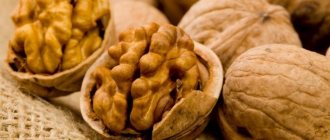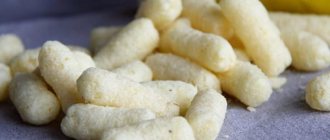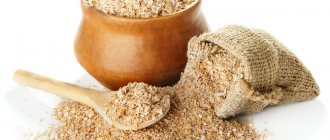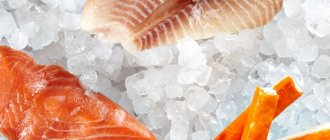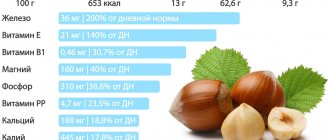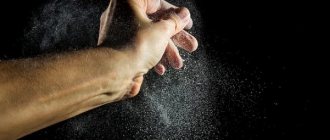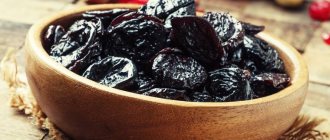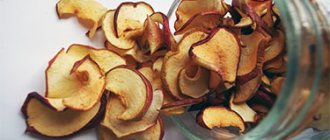Aerial treatment is loved by adults and the elderly, small children and teenagers. Currently, the product is available with various flavors, resulting in chopsticks of different shapes and colors. Today you can buy corn sticks with condensed and baked milk and nuts. The older generation will try bacon or cheese sticks. These days, the popular sweet delicacy can be found on the shelves of any store.
Many people think that corn sticks are made directly from cereals, but this is far from the case. The product is made from foamed corn flour. You must have special production equipment. Flour can be purchased ready-made at the store or made by grinding grains in a coffee grinder.
Technology for preparing corn sticks
This technology is not considered complex, but for its successful implementation certain conditions must be met.
The product manufacturing process consists of phases:
- Preparatory . The raw material in the form of corn grits is dried and sifted. During this process, grains that are smaller than 0.67 mm and larger than 1.2 mm are eliminated. The fractions must be almost the same size in order to be evenly saturated and foamed. If fine flour gets into the prepared mass, during processing it sticks together into dense lumps and burns.
- Air conditioning . The sifted dry mass is sent to a special conditioner, in which the cereal is kept for 3 hours, constantly stirring. The moisture level of the raw materials does not exceed 25% - this is carefully controlled.
- Extrusion . The aged, moist, salted mass enters a long extruder. Passing through it, the cereal warms up to high temperatures (from 200 degrees). Gradually, the effect of water vapor increases, which is why the corn mass becomes plastic and homogeneous. Hot raw materials are pushed through the opening of the apparatus, exposed to hot air. Heated water vapor passed through the raw material explodes the particles of the mass and expands it. This is how the structure of the corn stick is formed. The volume of the finished mass is significantly greater than the volume of the original cereal. A mechanical knife cuts off the ejected “dough”. The sticks are sent by air flow to the receiver, where they are dried. The humidity of the final product is up to 6%.
- At this stage the products are ready for consumption., but before sale they are impregnated with flavoring and vitamin additives. These fillers easily penetrate into the porous product. Usually, puffed sticks are filled with glaze, which increases the nutritional value of the product and improves its taste. The delicacy is also soaked in food essences, vitamins, and chocolate. Glazing takes place in a pan: the apparatus is filled with sticks and vegetable oil. These products are mixed for about 5 minutes. Next, additives are introduced. Fat-soluble flavor enhancers are distributed efficiently across all sticks.
- Packing . The technology is carried out using standard filling machines.
Corn sticks, the benefits of which also depend on the equipment of the enterprise, can be created using non-standard new technologies. The described algorithm is considered general.
During production, the quality of the sticks is assessed according to a number of parameters:
- the size of the foam bubbles (if the bubbles are too small, the density of the sticks exceeds the norm; if the foam consists of very large bubbles, the products may turn out to be of irregular shape);
- humidity of the sticks at the exit : a product that is too wet will not have an appetizing crunch, will quickly settle and turn into a wet lump. An overdried product can easily lose its shape and crumble;
- quality of distribution of flavoring additives : fortifiers easily fall off to the bottom of the package; conscientious manufacturers try to minimize this defect;
- thickness of the top layer of products : bubbles on the surface are smaller than inside the foam product; this is necessary so that the sticks remain intact and maintain the correct shape; the enveloping layer should be very thin so as not to feel like a crust.
If the product turns out crispy, whole, pale yellow, it was made from natural raw materials, observing the listed conditions.
What are the benefits of crab sticks?
Crab sticks from white ocean fish are a healthy product, rich in micro- and macroelements. In addition to the general beneficial qualities, certain points are also highlighted for women (including pregnant women), men and children.
The main advantage of crab sticks is the reduction of bad cholesterol and normalization of blood pressure by saturating platelets with oxygen. The walls of blood vessels are strengthened, therefore the occurrence of atherosclerosis and cardiovascular diseases is prevented.
For women
For women, crab sticks are beneficial due to their iron content, therefore, during menstruation, the likelihood of developing anemia, which indicates a reduced amount of hemoglobin in the blood, is reduced. The composition contains ocean fish, which provides considerable benefits for the woman’s body. These are saturated fats (Omega 3,6,9), which are necessary for the normal functioning of the reproductive system.
For men
Men are more likely than women to suffer from bone and heart diseases due to heavy physical activity. Therefore, they are recommended to have in their diet foods that can strengthen the so-called problem areas. Crab sticks help dissolve salt in bones and cartilage tissue, which prevents the appearance of deposits that disrupt the normal functioning of the musculoskeletal system.
During pregnancy
During pregnancy, crab sticks are useful for women, but before use they need to be heat-treated to eliminate substances that can lead to an allergic reaction or disruption of the gastrointestinal tract. You can prepare a warm salad containing fresh vegetables and processed crab sticks
This is both beneficial and nutritious, which is important for the expectant mother and her child.
Crab sticks, created from white ocean fish, have the following positive effects on the body of the expectant mother and fetus:
- The level of bad cholesterol is reduced, which eliminates the increase in blood pressure.
- The growth and development of the fetus is normalized due to the high protein content.
- The functioning of the digestive system improves.
- Micro- and macroelements, including iron, provide an increase in hemoglobin, which prevents the occurrence of anemia, which is considered a common problem during pregnancy.
Note! Only high-quality crab sticks are recommended for consumption, so when choosing, you need to carefully consider the features of the composition. Video: how to eat properly during pregnancy
Video:
how to eat healthy during pregnancy
When breastfeeding
During lactation, the use of crab sticks is not always allowed due to the content of dyes (even natural ones) and flavor enhancers, since these are chemical elements that penetrate into breast milk. For a newborn, this composition of mother’s milk cannot be considered beneficial. But doctors allow the introduction of a product into the mother’s diet when the child reaches four months of age, since his body has already fully adapted, and accordingly, new products will not cause an acute reaction
It is important to take into account that you can introduce the product into the diet only in a minimal amount, gradually increasing it
When choosing crab sticks for a nursing mother, it is important to consider the composition, since it should not contain harmful preservatives or E-additives, which are classified as toxic substances. You also need to remember that a healthy product cannot be cheap, so you should not skimp on crab sticks
For children
The child’s body is not yet ready to consume so-called artificial products, which include crab sticks. The composition contains chemical elements in the form of dyes and flavor enhancers, to which the child’s body can react sharply in the form of an allergic reaction or disruption of the gastrointestinal tract.
But a natural product, which does not contain foreign elements that are not characteristic of the composition of high-quality crab sticks, can be given to a child, taking into account the daily norm. Children can have 50–60 grams of crab sticks per day, depending on their age. Natural protein obtained from ocean fish makes the product useful for the development of the child's muscular and skeletal system.
If your baby has an allergic reaction or a feeling of general malaise in the body, then you should immediately exclude the product from the diet and rinse the stomach to remove any remaining crab sticks.
Calorie content and composition
Corn sticks, the benefits of which are determined by the quality of the products, are prepared from basic ingredients and additives. The standard list of ingredients includes corn grits, odorless and tasteless oil, and finely ground salt. Synthetic components are also added: various flavor enhancers, preservatives, stabilizers.
This corn product is considered high in calories - more than 500 kilocalories per 0.1 kg of sweetness. BJU of this volume of sticks: 6 g proteins, 30 g fats, 60 g carbohydrates.
The benefits of corn sticks
Starch in corn products becomes easily digestible under the influence of temperature and pressure. This increases the energy value of the sweet. The sticks contain more fast carbohydrates than raw corn before processing.
Fast carbohydrates quickly enter the bloodstream in the form of glucose. The feeling of hunger disappears almost immediately and a surge of energy occurs. Corn products enriched with valuable additives (natural juices, vitamins) are considered a “healthy” product.
Vitamin composition of puffed corn products:
- tocopherol;
- phylloquinone;
- thiamine;
- riboflavin;
- pantothenic acid;
- pyridoxine;
- folic acid;
Corn sticks. They have both benefits and harm. It is important to know this and use it correctly. - RR;
- choline
Mineral composition of sticks:
- potassium;
- calcium;
- magnesium;
- sodium;
- phosphorus;
- iron;
- manganese;
- copper;
- selenium;
- fluorine;
- zinc.
Of the listed minerals, sodium, phosphorus, and calcium are most abundant in the sticks, and among the vitamins, choline, riboflavin, and PP are most abundant.
What is corn?
What is corn, the benefits and harms of corn for the human body, what medicinal properties does it have? All this is of great interest to those who lead a healthy lifestyle, monitor their health, and are interested in traditional methods of treatment, including using vegetables and cereals So we will try to answer these questions in the following article.
So:
Corn is an annual, herbaceous plant that grows up to three meters in height. It is grown for its cobs and grains and is the most important grain crop after wheat and rice. Corn is divided into 9 groups (depending on the properties of the grain): flint, tooth-like, semi-tooth, popping, sugar, starchy, starchy-sugar, waxy and filmy.
Corn (or sweet corn) is the only representative of the genus Corn belonging to the family of cereals (or Poaceae). In addition to cultivated corn, the genus Corn includes several wild subspecies. Corn is considered one of the oldest plants cultivated by mankind - according to scientists, it was introduced into cultivation about 8,700 years ago in the Balsas Valley (Mexico).
Historians believe that corn played an important role in the development and establishment of all highly developed cultures of America (May, Aztecs, Olmec culture), explaining this by the fact that it formed the basis of highly productive agriculture, without which a developed society could not arise. After the discovery of the American continent by Columbus, corn appeared in Europe and very soon “conquered” this part of the world. Currently, corn is one of the most important food crops grown by humans. And the largest producers of this cereal include the USA, China, Mexico, India, Brazil, Argentina, Indonesia, South Africa, France and Italy.
The crop is photophilous and heat-loving, quite drought-resistant, does not tolerate shading, especially in the first half of the growing season. The growing season is usually 90-150 days.
People call her the “queen” of the fields. Corn is very unpretentious, but there are two prerequisites for obtaining a good harvest - loose and well-fertilized soil and abundant watering. Manure can be used as a fertilizer, which is applied during the autumn digging process.
Corn is planted in late April - early May, when the threat of frost is behind us. Then all that remains is to wait for germination and ripening. A sign of ripening corn cobs, as experts note, is dried hairs on the cobs. Corn is harvested as the cobs ripen. The cob grains should be soft and release milky juice when pressed.
Corn grain produces: cereal, flour, starch, alcohol, animal feed; from the germ - corn oil. Green mass, silage, hay - feed for livestock; from dry stems and cobs - paper, linoleum, viscose, etc. It is widely cultivated in all agricultural regions of the world. Grain yield 30-100 c. with 1 hectare or more.
Corn is one of the most popular foods on Earth, so it is not surprising that it has many culinary uses. In industry, artificial fiber is obtained from corn protein; corn starch is used in the production of medicines, viscose fiber, glue, paper and explosives, as well as for finishing fabrics and leather. Corn oil is used to make paints, soaps, and rubber substitutes.
Corn stalks and leaves are used in the production of fertilizers, paper, packaging and construction materials; and from the stalks furfural is obtained - a raw material necessary for the production of nylon, plastics and other synthetic substances; "corn hair" is used in medicine.
Corn comes to the table of a modern person in completely different versions: in the form of fresh cobs for cooking, canned food, frozen mixture, cereals, butter, flour. In addition to its good taste, corn also has medicinal properties.
Harm of corn sticks
Corn sticks, the benefits of which depend on the manufacturer, can cause significant harm to the body. If you purchase airy sweets from unknown manufacturers, there is a high probability of dangerous fillers entering your body. High quality corn products are considered harmless. The only serious danger to a healthy person is possible weight gain.
Those with diabetes should limit their consumption of treats. Popsicles are known for their high glycemic index. They are not recommended for high blood sugar levels.
In case of gastrointestinal disorders, consumption of corn delicacy can cause active gas formation, accumulation of gases in the stomach and intestines. If you have an individual intolerance to corn raw materials, it is also undesirable to use air sticks. Sometimes natural and chemical fillers cause negative reactions in the body, so it is important to carefully check the composition of the product.
If the sticks are consumed regularly, over time it can lead to tooth decay. The reason for the development of the disease is not only in sweet additives. The corn mass layers and is difficult to remove from the gums and teeth. Even using a toothbrush, floss and other cleaning devices does not always help get rid of treat residue.
For ulcers and gastritis, consumption of corn sweets is undesirable. This is a prohibited product during therapeutic diets. But in the remission phase, a small amount of sticks will not harm. In this case, it is advisable to familiarize yourself with the doctor’s recommendations.
If you are concerned about skin imperfections, especially those caused by digestive disorders, it is not advisable to consume corn products. The sticks contain a lot of corn starch, sugar, and fat, which can cause rashes, dullness and other skin imperfections.
Those who suffer from chronic dermatological diseases should be especially careful. Sometimes the body’s negative reaction does not appear immediately, but only over time. What negative consequences include: spasms, pain, nausea.
Is it possible to eat corn while losing weight?
Contents 1 Historical background 2 Chemical composition and calorie content of corn flakes 3 The best manufacturers of corn flakes 4 Useful properties of corn flakes 5 Production technology 6 What can be prepared from corn flakes 7 Selection and storage 8 Tips for use 9 How to choose a quality product 10 Harm of sweet and non-sweet corn flakes sweet 11 Corn flakes for weight loss 12 What are we talking about? The Kellogg brothers were Seventh-day Adventists and believed that a leading role in restoring the health of their patients should be played by diet - and not an ordinary one, but one that would help sanatorium guests renounce everything earthly, completely suppress libido and tune in to divine grace. Therefore, the most common dish on the sanatorium menu was porridge with water. Naturally, patients soon began to grumble, demanding a diversified diet. The brothers began experimenting with cereals, trying to develop some new dish. It was supposed to be a flatbread made from wheat flour, prepared in a special way: boiled wheat was passed through special rollers, and the resulting mass was baked. Once wheat was replaced with corn. The layer of dough formed after the grains were passed through rollers was crushed, fried and served for breakfast with milk. The guests of the sanatorium appreciated the new dish, moreover, they told their relatives and friends about it.
Features of use
There are no strict recommendations for the use of corn sticks. Children over 3 years old can enjoy one pack of sticks per day. An adult can eat several packs of air sticks without harm to health. Products drenched in milk - a nutritious breakfast.
For one serving, take about 0.1 kg of treats and the same amount of milk. The portion will be voluminous, because the sticks are large and light. It’s still not worth eating chopsticks for breakfast every day. Ordinary sticks, not enriched with vitamins, are high-calorie foods and bring almost no benefit.
Can it be used for pancreatitis, gastritis, ulcers?
In case of pancreatitis, the salt in the corn delicacy aggravates the inflammation of the pancreas. Powdered sugar and other sweeteners increase the stress on the insulin production function. With this disease, the absorption of fats becomes more difficult due to an insufficient amount of enzymes. The sticks use vegetable oil, which negatively affects the functioning of the inflamed organ.
Synthetic fillers and some natural additives (spices, glaze) are harmful for pancreatitis. At the exacerbation stage, the emphasis is on soft, tender foods. During the period of remission, relaxations of the strict therapeutic dietary regime are allowed. At this time, food can be varied with “rough” products. A small handful of natural sticks without additives is allowed.
The products must be washed down with yogurt, juice, and warm tea. This combination will soften the rough components of the sticks and make them more gentle on the pancreas. But it is still undesirable to satisfy your hunger with a corn product. The hard texture and the abundance of coarse fibers stimulate the formation of gases, which cause pain, cramps, and bloating.
It is important to discuss with a specialist the possibility of consuming coarse fibers. Even during the weakening of disease syndromes, any product can renew attacks.
If you eat a large amount of corn sticks during acute gastritis or ulcers, the consequences will also be negative: increased symptoms, bloating, stomach pain and weakening of the entire digestive system.
Medicinal properties
• Corn has many medicinal properties. It is widely used in traditional and folk medicine for the treatment of somnological disorders, increased irritability, depressive states, neuroses, stress, and psycho-emotional overload.
• Corn grains prevent the development of putrefactive processes in the gastrointestinal tract. The product quickly and effectively restores the body after nervous exhaustion, heavy mental and physical stress, and the negative effects of alcohol. It is an excellent prevention of the occurrence and development of cancerous tumors.
• Corn is used to treat diarrhea, constipation, gastritis, hypertension, age spots, acne, skin defects, anemia, osteoporosis, problems with lymph clotting. The product accelerates metabolism, improves microflora and intestinal motility. Corn grains have a low glycemic index and do not increase blood sugar levels, therefore they are recommended for people suffering from type 2 diabetes and obesity.
• Corn reduces the risk of heart attacks and strokes, and is an excellent preventative against many infectious and colds.
Contraindications and harm
✘ Corn has virtually no contraindications, but in some cases it is necessary to avoid using it. You should not introduce the product into the diet for those people who have been diagnosed with individual intolerance, a tendency to allergic reactions, certain diseases of the digestive system (gastritis, stomach and duodenal ulcers, etc.), increased blood clotting, varicose veins.
✘ Corn can harm the body if consumed very often and in large quantities. Abuse of the product can cause stool disorders, flatulence and bloating. People who have a special treatment diet should consult a specialist and check with him whether they can introduce corn into their diet.
Contraindications
Sticks are not useful for everyone.
Corn delicacy can be harmful to many:
- breastfed babies (if the nursing woman uses chopsticks);
- pregnant women;
- with a negative individual reaction to the components of the sticks;
- in case of dysfunction of the digestive system (especially at the stage of exacerbation);
- anyone with elevated blood glucose levels;
- if you are concerned about skin imperfections (inflammation, rashes, dullness);
- for diseases of the oral cavity.
Anyone who is not included in the listed groups can periodically enjoy corn sweetness with liquid.
How to choose
To select quality products, pay attention to the product characteristics described in the table:
| Product Feature | Quality sticks | Poor quality sticks |
| Product integrity | few crumbs, pieces, almost all products are solid, not loose | a lot of loose, partially crumbled products, a lot of crumbs at the bottom of the package |
| Compound | a small natural list of ingredients (cereals, butter, sugar, salt); light yellow color, faint smell of sticks | harmful synthetic substances as additives indicated on the packaging (honey, chocolate, condensed milk); strong smell, bright color of products; stabilizers, flavorings in the list of ingredients |
| Freshness | the expiration date has not expired (varies between different brands: 3 – 8 months) | there is no expiration date or production date on the package; storage period has expired |
| Humidity | dry dense crispy products | wet soft sticky sticks |
It is better to choose well-known brands with a positive reputation. But even their products should be carefully checked.
Beneficial features:
Corn is a valuable vegetable crop, a healthy food product and a source of a huge amount of healing substances.
Composition of corn:
Corn grains contain vitamins C, K, PP, D, group B, as well as fiber, starch, potassium, magnesium, phosphorus, copper, nickel, tocopherol, pyridoxine, biotin, pantothenic and linoleic acids.
Phenolcarboxylic acids, flavonoids, rutin and glycosides were found in corn leaves; in stigmas - fatty and essential oils, pantothenic and ascorbic acids, steroids, saponins, glycosides and other substances.
Beneficial features:
- Eating corn has a beneficial effect on the gastrointestinal tract and relieves constipation.
- Corn starch helps form muscle fibers and nourishes nerve cells.
- Pectins contained in grains exhibit antitumor activity.
- Glutamic acid improves memory and also has a beneficial effect on metabolic processes occurring in the brain.
- Young corn cleanses the body well of harmful substances and accumulated toxins.
- The choleretic properties of corn are used in the treatment of hepatitis and cholecystitis.
- Corn dishes are recommended for those who suffer from obesity, diabetes, and allergies.
- Corn is useful as a dietary food for nephritis, epilepsy, gout and liver diseases.
Corn has a beneficial effect on the functions of the gastrointestinal tract, removes toxins and a number of harmful substances from the body, and activates all metabolic processes.
Regular consumption of fresh or cooked corn reduces the risk of developing colon cancer. Corn silk preparations have a beneficial effect on urinary functions and normalize kidney function. Corn oil stimulates the functions of the gallbladder, helps cleanse the body of waste and toxins.
How to make your own corn sticks
Products are prepared in a regular kitchen or using special equipment.
On professional equipment
The sticks are prepared using special equipment. For conveyor production of delicacies, you can purchase special equipment: a household extruder, a screw conditioner. For this recipe, the components are taken “by eye”.
Cooking steps:
- Corn grits are ground in a coffee grinder. Evaluate the size of the grains: they should be the same. A mass consisting of different fractions will be saturated with moisture unevenly, and lumps will appear in it.
- Place dry raw materials in a screw conditioner and fill it with slightly heated salted water. The mass should be mixed evenly for 3 hours. Make sure that the humidity in the apparatus is maintained at the same level - 25%.
- Well-broken wet cereal is placed in an extrusion device, heated to 200 degrees, and foamed. A homogeneous corn foam is obtained.
- The device squeezes the dough into a drying container, cutting off identical sticks with a mechanical knife. The products are dried to a standard humidity level of 5%.
- The finished air strips are glazed. First, they are coated with transparent vegetable oil, then in a mixing drum they are combined with powder additives (sweet powder, fine salt, herbs).
If you use professional technology and strictly follow the instructions for creating sweet sticks, the product will not differ from the factory version.
Simplified home method
Such products are much denser and heavier. They are softer inside than the factory version.
Compound:
- milk (natural, any fat content) – 70 ml;
- flour (corn, fine grinding) – 0.1 kg;
- butter (you can use the same amount of lean butter) – 50 ml;
- eggs – 2 pcs.
Cooking steps:
- Any liquid oil is combined with milk and left to simmer over low heat until it boils.
- Add flour in small portions, constantly stirring the liquid. This will prevent lumps from appearing.
- Remove the brewed flour from the burner and cool.
- Pour the eggs into the corn mixture and beat.
- The pastry bag is filled with thick dough.
- Squeeze the sticks out of the mass onto the parchment paper that is used to cover the baking sheet. You can also draw other figures.
- Products are baked at 160 degrees for 25 minutes.
Sticks baked at home may become covered with a golden, crispy crust during baking. These homemade sticks are a bit like cookies. This makes their taste rich, “homemade”.
Corn sticks are introduced into the diet with caution: after checking with a doctor, having studied the composition of the products. But even in the absence of contraindications, you should not consume several packs of the product per day. Small portions of fortified sticks will be beneficial and will give you a feeling of fullness.
Article design: Oleg Lozinsky
